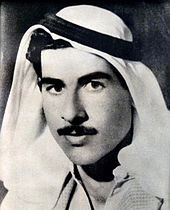
With such a long time at anchor off Doha, Qatar, there was not any excuse not to write home – at least we didn’t pay for the postage. We handed our letters to the purser or chief steward, which was then handed over to our agent, along with any Company communication. The Company mail was bagged for head office in London and posted. As you see everything was what we call ‘snail mail’ today – life without the internet.

We sailed from Doha for Kuwait after our thirteen days of hanging around at anchor and only working cargo for a day.
Leaving Doha on the 12th July, we arrived off Kuwait at 4.00 pm on the 13th and of course we anchored . . .

Kuwait from the air – picture from the internet.
We stood anchor watches (the same system as at sea), so I was on the mid-day to 4.00 pm and the midnight to 4 am. I remember recording the temperature at 4.00 am as I completed the ship’s log 37 c ( 98 F), It was a warm night, but not as hot as the lunch time report, which listed the temperature as 45 c (113 F) mat 1.00 pm, and we didn’t have air-conditioning and everything that was metal was too hot to touch, which meant most of the ship outside the accommodation.
The following day we moved alongside to work cargo. An uneventful day of heat and dust and the smell of oil, but what would I expect being in the Gulf?
To reach our next port we would be sailing up the Arvand Rud if we wished to discharge in an Iranian port or the Shatt-al Arab if we wished to do business with Iraq. Both side of the river were ‘touchy’ as to how we named the river.
 As you see Kuwait is at the bottom of the map and our destination was to be Basra in Iraq.
As you see Kuwait is at the bottom of the map and our destination was to be Basra in Iraq.
Khorramshahr & Abadan are both on the Iranian side of the river.

In 1968 the Shah was still in control at that time and things did not change until 
Khomeini arrived in 1979.
From Kuwait we sailed to Basra, the plan being to call at the Iranian ports on the way south – this was our normal procedure.
We arrived in Basra on, I think, the 17th July, which was the day of the Ba’thist bloodless coup d’état in Iraq

and this gentleman became Vice President. The photo is of when he was a very young man and became more recognizable later in life

Saddam Hussein in 1980
From memory, the change in government did not affect us and after working cargo we sailed for Iran.
On arrival in Khorramshahr (Iran) on Saturday 27th July, I received a letter from the Company that I was to fly home because my contract for two and a half years on the eastern service had come to an end.
I don’t think I’d ever packed my bags as fast as I did that day – goodbye heat and sand!
My relief walked up the gangway and I warmly welcomed him and offered him my last cold bottle of beer. . . .what a sacrifice!
The ship’s agent drove me to Abadan to catch a plane to Tehran for the connecting flight to London.

Iran Air B727 /100 had been in service with Iran Air for a couple of years before I flew with them in 1968, configuration was 106 passengers in two classes, I was of course in economy.

B727 / 100 seating – I was near the back.
As I checked in for the flight at Abadan airport I was surprised at the large amount of hand baggage that passengers were allowed to carry in to the passenger cabin considering how small the cabin was, in comparison to today’s aircraft.
I’d flown around Asia & Australia to join various ships so I was aware of the restrictions re cabin baggage, but Iran Air didn’t seem to have the same restrictions.

One person had a small primes stove.
After we had taken off and the seat belt light had been switched off the man with the primes stove squatted in the aisle and lit the stove to make his tea . . . .
Nobody reacted near the tea maker, and as I had an aisle seat I undid my seat belt to tell the tea maker to put out the naked light. Before I had had gone two steps there was a blared movement of a stewardess (one could use this word in 1968) moving from the forward part of the aircraft to the tea maker. I’ve never seen a crew member move so fast before or since.
The flight was IR 800 and we left Abadan at 10.45 pm (2245 hr), flight time was about 90 minutes.
We landed at Mehrabad airport, which at the time was Tehran’s primary airport. The link will give you an idea of ‘yesterday’s’ travelling – it is silent. There weren’t any aero-bridges at that time.
The aircraft in the short film was not the aircraft in which I flew.
My connecting flight was due out at 02.55 hrs (02.55 am) Sunday, it was going to be a long night.

In 2007 a new airport opened in Tehran for international flights. It is called
Imam Khomeini International Airport. (Picture from the internet)















